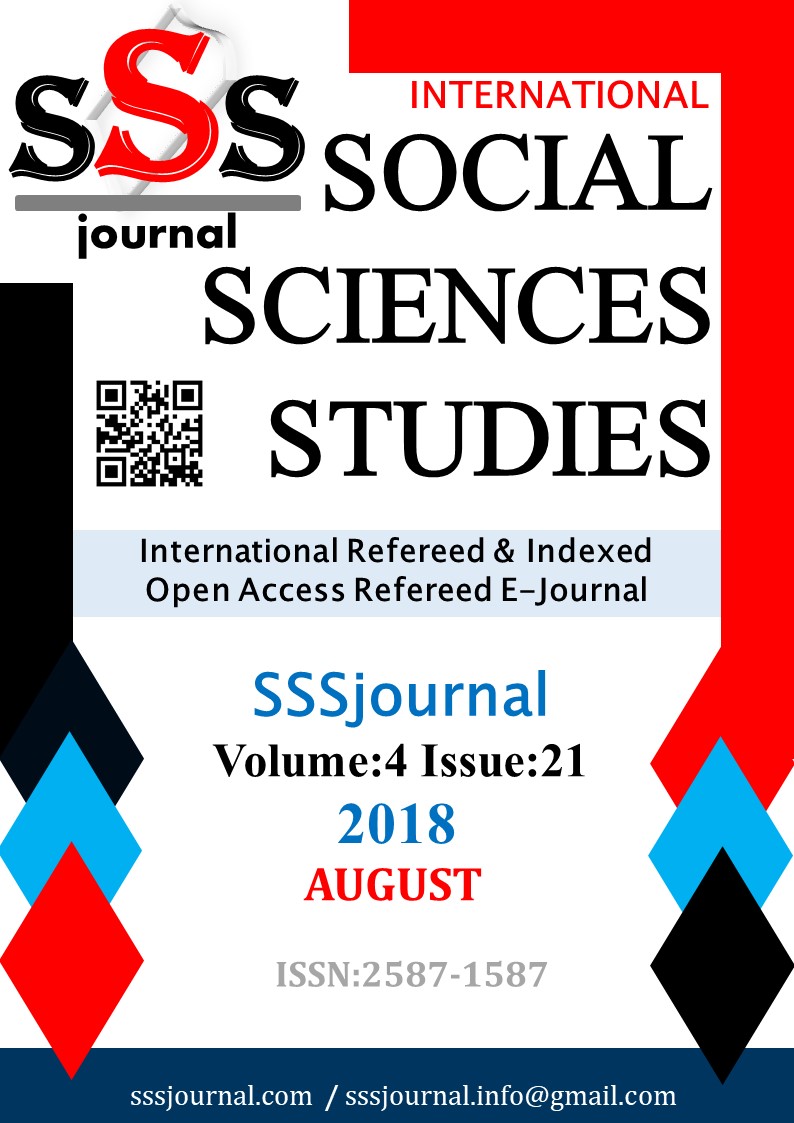Author :
Abstract
Bu çalışmanın amacı X denim firmasının dikim bölümünde uygulanan klasik üretim tekniklerinden sıyrılarak yalın üretim sistemi ile problemleri belirlemek ve daha verimli bir çalışma yöntemi oluşturmaktır. Bu sayede dar boğazlar, kayıp zamanlar, katma değeri olmayan aşamalar belirlenip, daha az kaynakla değer teşkil edecek faaliyetlere odaklanılacaktır. Bu amaç için yalın üretim tekniklerinden değer akış haritalandırma yöntemi kullanılmıştır. Bu işlemler için öncelikli olarak firmanın dikim bölümünde gözlemler yapılıp veriler toplanarak mevcut durumu haritası çizilmiştir, problemler ortaya konulmuştur. Yalın üretim yöntemleri ile bu problem çözümleri belirlenerek gelecek durum haritası çizilmiş ve sonrasında yeni iş planı uygulama aşamasına geçilmiştir. Yapılan bu uygulama çalışmaları sonrası; kesimhaneden düzensiz gelen mallar, karmaşık iş akışı, gereksiz ürün taşınması, fazla işlem aşaması ve çalışan sayısı, dar boğazlar, kayıp süreler gibi bulgular elde edilmiştir. Sonuç olarak değer akış haritalandırma yönteminin uygulanması ile dikim bölümünde kaynaklar en iyi şekilde kullanılmış, daha düzenli çalışma ortamı oluşturulmuş, gereksiz işlemler ortadan kaldırılmış, iş akışı düzenlenmiş tek hat haline getirilmiş, dar boğazlar, beklemeler ortadan kaldırılmış bu sayede çalışan kişi sayısı 72’den 67’ye düşürülmüş. Üretim süresi 16 dakika 131 saniyeden, 10 dakika 756 saniyeye getirilerek % 66’lık bir iyileştirme elde edilmiştir
Keywords
Abstract
The purpose of this study was to identify problems and to create a more efficient working method in the sewing section of the X denim company using the lean manufacturing system instead of conventional production techniques. In this way, it will be possible to identify bottlenecks, lost times, non-value added phases and to focus on valued activities with less sources. For this purpose, the value stream mapping method- a lean production technique- was employed. Before applying these techniques, we made observations at the sewing section of the company and collected data in order to map the current state and reveal the problems. Using the lean manufacturing methods, potential solutions were determined for the problems identified and a road map was determined. Thereafter, a new working plan was put into practice. The findings obtained though these application studies demonstrated irregular fabric transfer from the cutting section, complicated work stream, unnecessary transfer of products, excessive number of processing steps and employees, bottlenecks, and time losses. Ultimately, the implementation of the value stream mapping method enabled the optimum use of the resources in the sewing department, created a better organized working environment, eliminated unnecessary operations, provided a new single-line work stream, eliminated bottlenecks and waiting periods and reduced the number of workers from 72 to 67. With a %66 improvement, the manufacturing time was decreased from 16 minutes 131 seconds to 10 minutes 756 seconds.
Keywords
- Abdulmalek, F.A., Rajgopal, J. (2007). Analyzing the Benefits of Lean Manufacturing and Value Stream
- Abdulmalek, F.A., Rajgopal, J. (2007). Analyzing the Benefits of Lean Manufacturing and Value StreamMapping Via Simulation: A Process Sector Case Study. International Journal of Production Economics, 107, ss. 223-36.
- Arslan, S. (2006). Yalın Üretim ve MAN Türkiye A.Ş.’de Örnek Bir Yalın Üretim Uygulaması. GaziÜniversitesi Fen Bilimleri Enstitüsü Endüstri Mühendisliği Anabilim Dalı Yayımlanmamış Yüksek Lisans Tezi.
- Bevilacqua, M. Ciarapica, F.E., Giacchetta, G. (2008). Value Stream Mapping in Project Management: A Case Study. Project Management Journal, 39 (3), pp. 110-24.
- Eser, S. Yıldız, M. S. (2017). Denim Pantolonu Üretiminde Değer Akış Haritalandırma Yönteminin Uygulaması. İşletme Bilimi Dergisi, Sakarya Üniversitsi, Cilt 5, Sayı 3, ss. 1 – 23.
- Lucy D. M. B. Towers, N. (2004). Lean or Agile: A Solution for Supply Chain Management in the Textileand Clothing Industry. International Journal of Operation s& Production Management Vol.24No.2, pp. 151-Manfredsson, P. (2016). Textile Management Enabled by Lean Thinking. Swedish School of Textiles University of Borås, Sweden.
- Pattanaik, L.N., Sharma, B.P. (2009). Implementing Lean Manufacturing with Cellular Layout: A Case Study. International Journal of Advanced Manufacturing Technology, 42, pp. 772-779.
- Womack, J. P., Jones, D.T. ve Roos, D. (1990). “Dünyayı Değiştiren Makine”, Türkçesi: Otomotiv Sanayi Derneği, 1, OSD Yayını, Panel Matbaacılık, İstanbul.
- Yıldırım, A. Şimşek, H. (2016). Sosyal Bilimlerde Nitel Araştırma Yöntemleri. Seçkin Yayıncılık, Ankara, ss. 285 - 302.
- Yılmaz, M. (2003). Kalite Yönetim Sistemlerinin Evrimi ve Toplam Kalite Yönetiminin Banknot Matbaası Genel Müdürlüğüne Uygulanabilirliği. Yayımlanmamış Uzman Yeterlilik Tezi, Ankara.





